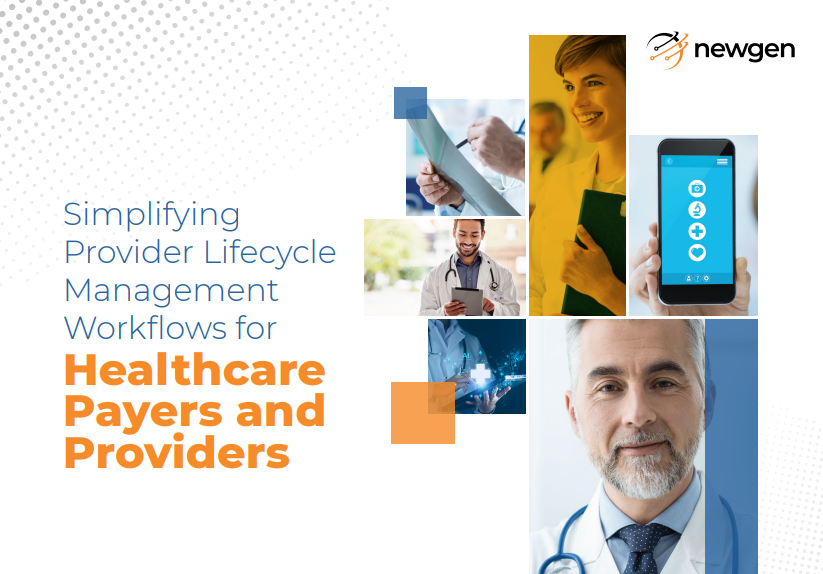A Smarter Approach to Provider Data, Credentialing, and Compliance Excellence
Providers are at the heart of healthcare delivery. Yet payers and healthcare organizations often struggle behind the scenes with fragmented systems, inconsistent provider records, and time-consuming credentialing processes. These issues make provider lifecycle management more difficult than it should be, slowing onboarding, complicating compliance, and creating obstacles that ultimately impact patient access.
This eBook explores how a modern Provider Lifecycle Management (PLM) strategy can simplify end-to-end provider operations. With the right technology, organizations reduce administrative friction, improve accuracy, and strengthen their relationship with the providers who deliver care.
The Challenge with Provider Lifecycle Today
Healthcare data grows every day. An expanding network of clinics, physicians, allied health professionals, and specialists creates complex management responsibilities for payer teams. When data is scattered across legacy tools or manual spreadsheets, the problems multiply:
- Providers wait too long for onboarding and activation
- Credentialing checks require repetitive follow-ups
- Provider directories publish incorrect information
- Updates are difficult to track consistently
- Audit and regulatory risks increase
- Operational bottlenecks affect service quality
These challenges take focus away from what matters most: enabling providers to deliver care without friction.
Why PLM Needs to Evolve?
Manual and siloed PLM systems cannot keep up with:
- Growing regulatory obligations around provider data accuracy
- Dynamic provider networks with frequent updates
- Hybrid care delivery requiring fast verification
- Higher patient expectations for timely access
- Cost pressures that demand operational efficiency
Next-generation PLM solutions replace slow, reactive processes with proactive coordination that supports the entire provider journey.
A New Approach: Intelligent PLM for Healthcare
The eBook introduces a streamlined transformation model built on six foundational capabilities that define modern PLM success.
1. Seamless Data Migration
Agencies and payer organizations often hesitate to modernize due to fear of losing critical data. A modern PLM platform ensures:
- Smooth transition through structured extraction
- Cross-verification and validation of records
- Protected movement of information across systems
- Retention of data integrity from start to finish
Migration becomes a controlled, secure, and reliable exercise.
2. Robust Data Standardization
Provider records must follow consistent standards across every attribute. Modern PLM supports:
- Pre-defined rules to normalize taxonomy, naming, and locations
- Regulatory-aligned formats to avoid record mismatches
- Accurate data that requires minimal rework downstream
Standardization creates a dependable data foundation.
3. Data Mapping and Transformation
As provider networks grow, so does the complexity of data structures. Intelligent mapping ensures:
- Consolidation of all relevant information sources
- Flexible ingestion from custom formats
- Correct association of providers, locations, and credentials
This results in a unified and trustworthy provider profile.
4. Smart Data Ingestion and Management
New providers join, existing providers update affiliations, and regulations evolve. Modern PLM enables:
- Multiple ingestion options including APIs, rosters, and manual updates
- Real-time validation against trusted sources
- Automated case creation for mismatched data
Continuous updates keep the accuracy intact across all touchpoints.
5. Actionable Reporting and Insights
Analytics transform static records into strategic intelligence. PLM reporting supports:
- Tracking of credentialing deadlines
- Compliance monitoring across regions
- Performance and network coverage insights
- Custom dashboards for operational transparency
Leaders make faster and more informed decisions.
6. Credentialing and Compliance Alignment
Credential checks should be seamless and consistently enforced. Modern PLM ensures:
- Automated verifications using trusted sources
- Workflow-driven updates based on policy changes
- Audit-ready documentation at every step
Compliance becomes proactive instead of reactive.
What Healthcare Organizations Gain?
Implementing intelligent PLM enables measurable improvements across the ecosystem:
- Faster provider activation means reduced service delays
- Lower administrative effort and operational cost
- Higher confidence in data accuracy and governance
- Smooth digital coordination with provider relations teams
- Improved experience for providers across every lifecycle event
Better provider experience translates into better patient care.
How Technology Supports Smooth Provider Journeys?
A future-ready PLM platform is built to ensure:
- Centralized lifecycle management from contracting to servicing
- Strong security aligned with healthcare regulations
- Deployment flexibility across cloud, hybrid, or on-prem environments
- Scalability as networks expand and requirements grow
Technology stops being a barrier and becomes an accelerator for compliance, care access, and operational responsiveness.
Newgen’s Role in PLM Transformation
Newgen enables healthcare organizations to simplify and modernize provider lifecycle management through unified automation, content intelligence, and secure data governance. The platform helps reduce redundancy in provider records, strengthens credentialing outcomes, and provides teams with real-time visibility needed to manage large provider networks more efficiently.
With smart workflows and configurable rules, Newgen supports provider relationships that are transparent, timely, and aligned to all regulatory expectations.
Supporting Providers Means Supporting Care
Provider lifecycle management is more than a back-office function. It directly influences how quickly patients receive care, how efficiently services operate, and how strongly providers feel supported in their roles. Modernizing PLM is a strategic shift that helps build a resilient healthcare ecosystem where providers can focus on delivering better health outcomes.
The organizations that take action now will build stronger provider networks, reduce operational strain, and create the seamless digital experience that the future of healthcare demands.

